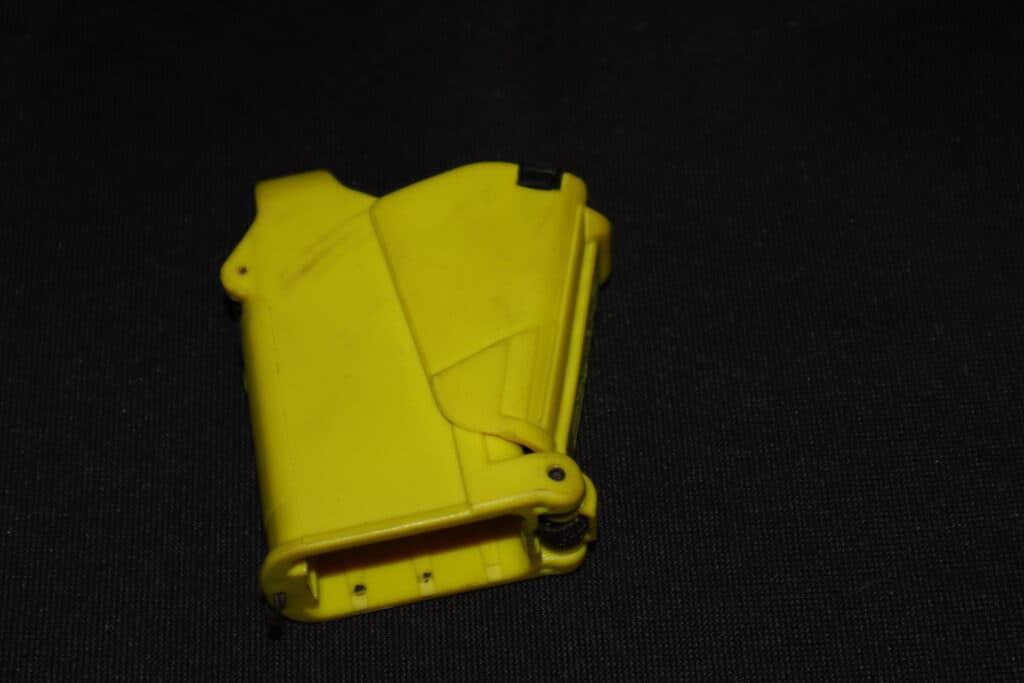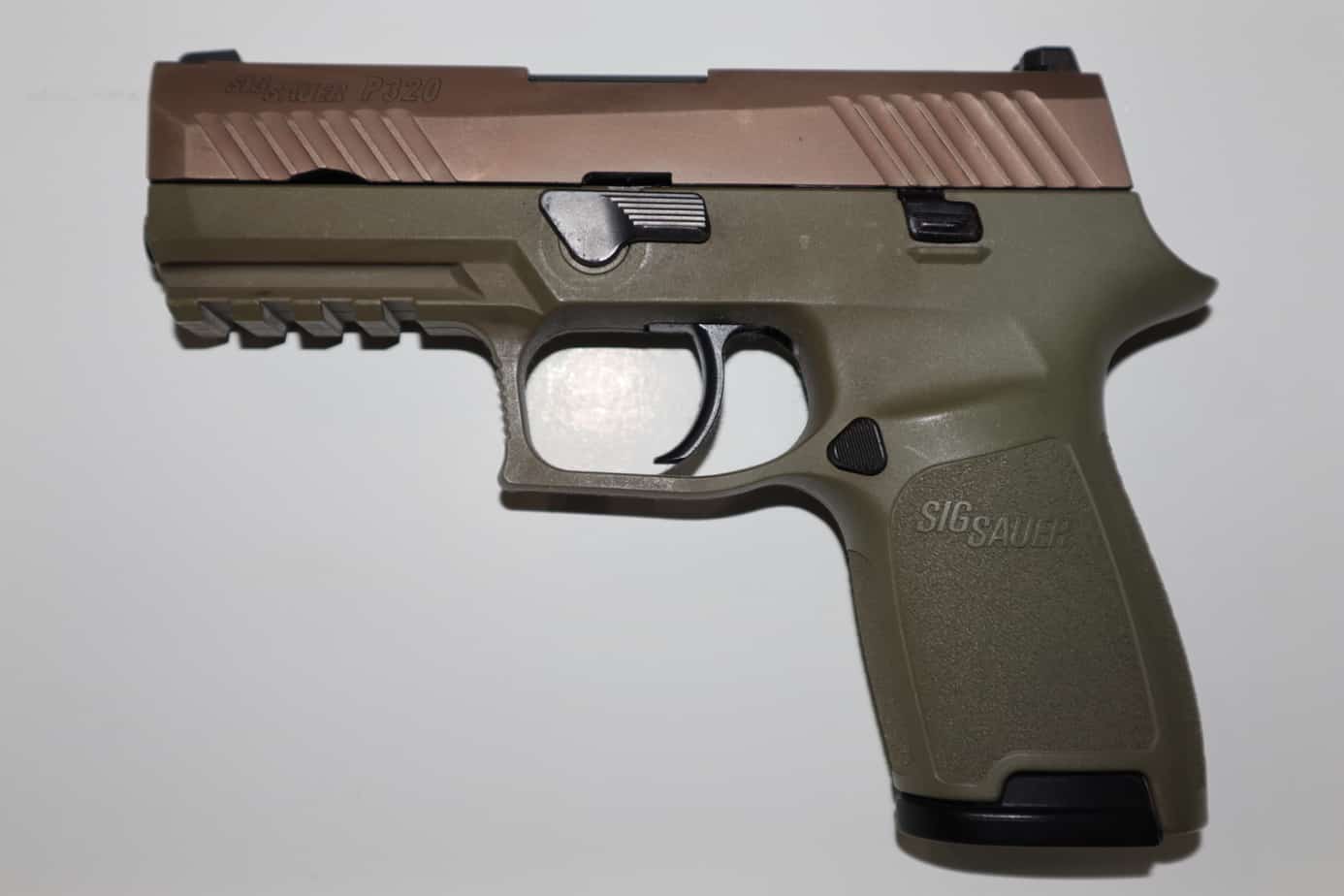Today we turn our attention to the merits of the semi-automatic.
Proponents of the semi-automatic pistol cite four reasons for their preference: larger capacity, slimmer lines, faster reload with magazines, and the more natural aim that results from its straighter shape.
Your preference for the semi-automatic over the revolver will depend on how you like to load the gun: racking the slide and inserting a magazine into the grip versus opening the cylinder to insert individual rounds.
Larger Capacity
The larger capacity of the semi-automatic may also factor into your decision. Semi-automatics carry their ammunition in a magazine that is inserted into the grip of the gun. In addition, they can have a round in the chamber while the magazine is full.
This is why manufacturers put a +1 at the end of the description. Small pistols such as the Kahr Arms P380 have a magazine capacity of six rounds, comparable to the five or six rounds in the typical concealable revolver, plus another round in the chamber.
A midsize semi-automatic such as the Sig Sauer P365 carries ten 9mm rounds plus one in the chamber.
If you are inclined to carry as much ammunition as possible, consider the full sized Glock G17, with seventeen 9mm rounds in the magazine plus one in the chamber. It weighs about thirty two ounces with a full magazine.
Optional extended magazines carry as many as 33 plus the one in the chamber. At eight inches long, this police favorite is still concealable for a larger person in heavy clothing. At 5’2″ I would find the G17 to be more than I want to carry. The extended magazine will not work for concealed carry.
For even more rounds at your fingertips you can holster a magazine or two on your belt. You can find holsters for just about any accessory, and magazines are no exception. Carrying extra rounds with a revolver is trickier, but still doable.
Slimmer Lines
Most likely, however, you are looking for a slim profile so the gun can slip easily into your waistband holster or another location on your body with minimal bulging to signal its presence to the world. A slimmer gun will also take up less space in an offbody instrument such as a purse or backpack.
The semi-automatic pistol does not have a cylinder to hold ammunition; instead it chambers the rounds with a slide that moves front to back. This streamlines the gun for easier concealment.
Faster Reload
During a self-defense encounter, speed of reloading can be a decisive factor in whether you win the battle.
The semi-automatic is faster to reload than a revolver, though the thumb pressure required to insert the cartridges into the magazine will be a bit much for some people.
For reloading during a self defense event, a preloaded magazine is your best bet. You can activate the magazine release to drop the empty magazine and then insert a full magazine into the magazine well fairly quickly.
When you are preloading your magazines at home, a speed loading device will make the task faster and less painful.
The Maglula is one such device. It looks like a Pez dispenser for bullets and operates on the same principle. Ordinarily, you push the bullets down into the magazine one by one, against a rather stiff spring that will help you build strong thumb muscles.

With the loading device, you press a lever and the device applies the pressure to the follower, the piece on top of the stiff spring, on your behalf.
Natural Aim
Pointing the semi-auto may feel more natural than the revolver due to the straight and narrow shape. The sights are lower and more in line with the position of your hand, so you shoot where your hand is aiming.
Other Considerations
Semi-automatics may weigh less than revolvers of comparable size because revolvers are likely to be made of steel and semi-automatics are more often made of polymer. This makes them lighter to carry, but lower weight means less mass to absorb recoil.
Semi-automatics are often chambered in smaller calibers than comparable revolvers. This makes for less recoil but also less stopping power. You can adjust to your preference by choosing a higher or low caliber gun.
Semi-automatics have a lighter trigger pull than revolvers. This makes it easier to pull the trigger. This is a plus if your fingers don’t have a lot of strength, but it can also be a negative if you don’t control your trigger finger.
Keeping your finger off the trigger until it is time to shoot can prevent accidental discharge of the weapon. Drawing a semi-automatic out of a holster needs to be done with awareness of where your trigger finger is because of the light trigger pull weight.
Use the safety on your semi-automatic if it is equipped with one.
A new shooter may find the semi-auto more difficult to learn than a revolver because it has more moving parts.
Semi-automatics are so named because you only have to rack the slide the first time you shoot the gun after you load it with a magazine. It automatically seats the next round when the slide returns but does not automatically shoot again.
The slide is the movable part on the top of the gun that you pull back to place the first round. Thereafter, as the action cycles with each shot it also loads the next round into the chamber without further racking.
Semi-automatics come in two styles: hammer fired and striker fired. The difference is whether you have a hammer or an internal striker causing the firing pin to move.
The hammer fired may be single or double action. On the single action you manually cock the hammer, which retracts the trigger. Then you press the trigger to release the hammer and fire the gun.
With a double action hammer fired semi-automatic the trigger press cocks the hammer for you and continued pressure releases the hammer to fire the gun. In both of these types the hammer is visible on the outside of the gun. It’s the little piece sticking out of the top that you pull back with your thumb.
A striker fired semi-auto has no external hammer. A trigger press retracts the internal striker and continued pressure releases the striker to fire the gun.
Pay attention to the ammunition you choose. A round nose is a good choice for a semi-automatic.
Semi-automatics are less tolerant of different shapes because they feed the round into the chamber from the magazine, whereas a revolver simply moves the round from the chamber into the barrel.
Malfunctions are more common with a semi-automatic, but can be cleared with little difficulty once you understand the mechanics involved. In most cases you can “tap and rack” to clear the malfunction.
Before you choose your semi-automatic pistol, look at the various types available. Fit it to your hand. I have small hands and prefer a gun that does not require a lot of finger stretching to reach the trigger and pull it back.
My husband’s glove size is 2X, so he will not be comfortable with a smaller gun. Fortunately, his bigger frame gives him more space to accommodate a larger holster.


